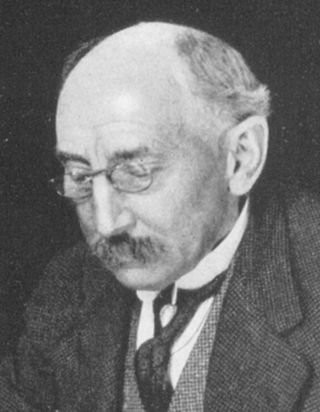Bryantella is a genus of jumping spiders that was first described by Arthur Merton Chickering in 1946. As of June 2019 it contains only two species, found only in Brazil, Argentina, and Panama: B. smaragda and B. speciosa. This genus was named in honour of Elizabeth B. Bryant.
Mary Julia Wade was an Australian palaeontologist, known for her role as the Deputy Director of the Queensland Museum. Some of her most renowned work was on the Precambrian Ediacaran Biota in South Australia.

William Joseph Rainbow (1856–1919) was an entomologist and arachnologist whose work includes the first catalogue of Australian spiders.

María Elena Galiano was an Argentine arachnologist. She was one of the leading taxonomists of Neotropical jumping spiders. Galiano worked at the Bernardino Rivadavia Natural Sciences Museum in Buenos Aires. She died in an accident on October 30, 2000. The genera Galianora and Galianoella are named in her honor.
Daviesa is a genus of Australian tangled nest spiders first described by A. Ö. Koçak & M. Kemal in 2008. This genus is named in honour of New Zealand arachnologist Valerie Todd Davies. As of April 2019 it contains only two species.
Dippenaaria is a genus of African araneomorph spiders in the family Anapidae, containing the single species, Dippenaaria luxurians. It was first described by J. Wunderlich in 1995, and has only been found in South Africa. The genus was named in honour of South African arachnologist Ansie Dippenaar-Schoeman.
Buckupiella is a genus of South American anyphaenid sac spiders containing the single species, Buckupiella imperatriz. It was first described by Antônio Brescovit in 1997, and has only been found in Brazil and Argentina. This genus is named after the Brazilian arachnologist Erica Helena Buckup.
Malenella is a genus of South American tangled nest spiders containing the single species, Malenella nana. It was first described by M. J. Ramírez in 1995, and has only been found in Chile. This genus was named in honour of María Elena Galiano.
Galianoella is a monotypic genus of South American araneomorph spiders in the family Gallieniellidae containing the single species, Galianoella leucostigma. It was first described by Pablo A. Goloboff in 2000, breaking it off from Azilia. It has only been found in Argentina. The genus is named in honour of María Elena Galiano.
Harmiella is a monotypic genus of South American dwarf sheet spiders containing the single species, Harmiella schiapelliae. It was first described by Paolo Brignoli in 1979, and has only been found in Brazil. The genus is named in honour of German arachnologist Marie Harm.
Bymainiella is a genus of Australian funnel-web spiders that was first described by R. J. Raven in 1978. This genus is named in honour of the Australian arachnologist Barbara York Main.
Hahniharmia is a genus of spiders in the family Hahniidae. It was first described in 2004 by Wunderlich. As of 2017, it contains only one species, Hahniharmia picta. The genus is named in honour of German arachnologist Marie Harm.
Ericaella is a genus of spiders in the family Cheiracanthiidae. It was first described in 1994 by Bonaldo. This genus is named after the Brazilian arachnologist Erica Helena Buckup. As of 2017, it contains 4 species.
Deelemanella is a monotypic genus of comb-footed spiders containing the single species, Deelemanella borneo. It was first described by H. Yoshida in 2003, and is found on Borneo. This genus was named after the Dutch arachnologist Christa L. Deeleman-Reinhold.
Ansiea is a genus of crab spiders that was first described by Pekka T. Lehtinen in 2004. This genus was named in honour of South African arachnologist Ansie Dippenaar-Schoeman. As of June 2020 it contains two species found in Africa and Saudi Arabia: A. buettikeri and A. tuckeri.
Chatzakia is a genus of spiders in the family Gnaphosidae. It was first described in 2016 by Lissner & Bosmans. This genus was named in honour of the Greek arachnologist Maria Chatzaki. As of 2017, it contains only one species, Chatzakia balearica, found on the Balearic Islands.
Katya is a genus of Southeast Asian jumping spiders first described by Jerzy Prószyński & Christa Deeleman-Reinhold in 2010. As of April 2019 it contains only three species. This genus is named after the Uzbek arachnologist Ekaterina Andreeva.
Ekaterina Mikhailovna Andreeva also known as Katarzyna Andrejewa-Prószyńska was an Uzbek arachnologist. She collected spiders in Central Asia and later published Spiders of Tajikistan. At least eight spider and harvestman taxa were named in her honor.
Staveleya is a genus of European sheet weavers. Its current name is a replacement for Hypsocephalus, already a genus in the snapper family of fish. The type species was originally described under the name "Microneta pusilla", but the type species is designated one of the junior synonyms, "Cnephalocotes dahli" because it has a physical specimen. The genus is named in honour of Eliza Fanny Staveley, the first woman to publish research on arachnology in the United Kingdom.
Sestakovaia is a small genus of liocranid sac spiders first described by Alireza Zamani and Yuri M. Marusik in 2021. As of December 2021 it contains only two species: S. annulipes and S. hyrcania. This genus is named after the Slovakian arachnologist Anna Šestáková.

